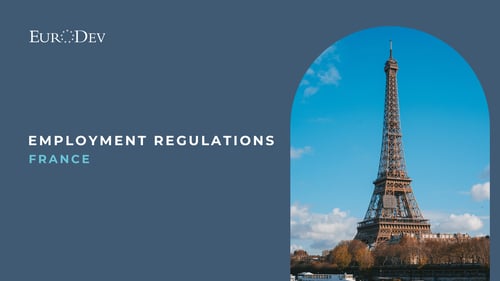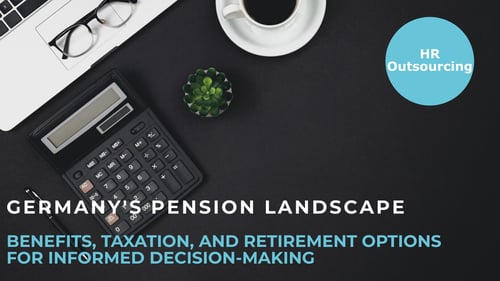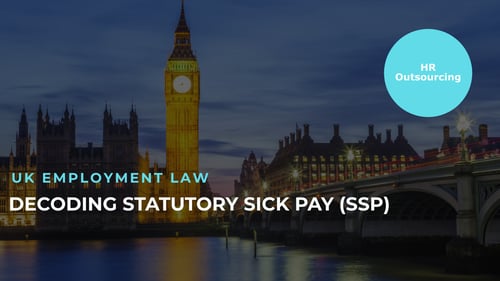Top 3 Trending Employee Benefits 2022
There are numerous written articles on the Great Resignation, tight labor market, and general issues which employers have faced so far in 2022. One of the most common questions employers raise is how they can keep pace with the competition when it comes to keeping their workforce. This article will explore the three most common employer trends seen in 2022.
Hybrid-work and home-work allowances
Globally, 16% of companies are fully remote, whilst 62% of workers aged 22 to 65 occasionally work remotely. It is reasonable to say that remote work is here for the long haul, but the question remains as to what form is best for both the employer and the employee?
Hybrid models can exist in three varieties, there can either be an at-will model whereby employees can choose between the office and home; there is a scheduled model where specific times are split between the two locations (For example one week at the office, one week at home) and lastly, a split team where there is a remote team and an on-site team. The best model will ultimately depend on the company's culture.
- Commutes to and from work are reduced by an average of 40 minutes daily.
- A survey was conducted after COVID-19 and 92% of people expected to work from home at least 1 day per week and 80% expected to work at least 3 days from home per week.
- 23% of those surveyed would take a 10% pay cut to work from home permanently.
- 20-25% of companies are partially paying the cost of home office equipment and furnishings.
- 59% of respondents said they would be more likely to choose an employer who offered remote work compared to those who didn’t.
Education
Education benefits offered by employers remain a fairly common practice, but as the cost of education continues to rise globally, employers have had to revaluate this benefit. MOOCs, micro-credentials, and short-course training programs have rapidly grown in popularity. Commonly, education allowances can either be treated as an upfront employer contribution or employee reimbursement. This is practically an industry standard in IT, law, and medicine, where there are rapid changes in the field. However, the number of companies that offers education assistance decreased between 2008 to 2018 by 5%, despite the labor market tightening up in that same period.
One particularly popular avenue of education is that of personal financial management. The covid-pandemic took a massive toll on the wallets of most employees, and as a result many employees now live paycheck to paycheck. Employers are also increasingly realizing that their employee’s personal finances are far from personal as they can directly impact the workforce in negative ways, such as increasing sick leaves, reducing productivity, and of course, increasing turnover. Studies have shown that employees are stressed when it comes to their personal financial well-being. Therefore, improving financial literacy for employees can be a significant benefit for employees and employers alike, as employees who have better control of their finances are less likely to end up with financial woes, request salary advances, or look for higher-paying jobs.
Education assistance helps to set employers apart from the pack, as employees can choose the best total rewards package available. Education remains one of the most powerful tools in any organization’s repertoire when it comes to trying to attract people, lower turnover, close the skills gap, or develop more leaders.
Compensation Increase
While non-fiscal benefits are increasing in an effort to stave off turnover due to the war for talent, for many employees cash remains king. Employers are increasingly required to out-pay competitors for talent.
In Ireland, the 2022 Salary Survey by Robert Walters expects professional services firms to increase their budget for pay raises by 10-15% this year – the largest increase was seen since 2008 and almost 3x the inflation rate. The same survey further found that almost half of companies (43%) are planning salary increases for current employees to keep pace with higher pay awarded to new hires, while over half (59%) of employees are expecting a pay rise this year following a two-year salary freeze. Similarly, starting salaries in Ireland have increased by 6-8% over the last year, while new starters in industries such as technology or health care saw pay hikes as high as +15-20%. Some estimates have projected that salaries for white-collar professionals will increase by up to 25% in the first quarter of 2022, as companies fight to hold onto their best staff.
In the USA, between 2016 to 2020, less than 35% of employers provided wage increases above 3%. However, by 2022 over 44% of employers have indicated that they will meet or exceed 3% — a 13 percent increase over the last six years. 44% of organizations say that pay is the reason they are losing talent, hence the sharp rise in salary increases. Advanced HR group, reported that Junior non-tech roles saw the highest increase in salaries between 2018 and 2021 with a 57% jump, from an average of $35k to $55k. Junior tech roles are also up by 50%, from $40k to $60k. Europe is however still behind the US in the compensation jump, with technical employees at seed-stage companies receiving 40-50% less on average than their US counterparts.
Apart from direct increases to gross wages, employers are increasingly offering fixed allowances for everything from meal tickets or travel/car usage to allowances for home-usage utilities and family healthcare. Many countries often have laws that allow certain allowances to be tax-free, or reimbursed on annual tax returns, which can increase the take-home salaries of the employees while keeping their taxes at a relatively similar level.
What works best for your company will ultimately depend on multiple factors such as the decision-making structure, financial wellbeing, corporate culture, or industry. The only thing that is for certain is that employees are fully aware that benefits programs are increasing in value, and organizations that fail to keep up with these trends are doomed to fall behind the competition.
About EuroDev
EuroDev was established in 1996 in the Netherlands with a single, defined purpose to help mid-sized North American companies expand their business in Europe. So far, we have partnered up with over 500 companies and helped them define and meet their European business goals. Services provided include Sales Outsourcing, HR Outsourcing, and Digital Marketing. Services provided include Sales Outsourcing, HR Outsourcing, and Digital Marketing.
Disclaimer: While we strive to provide accurate and timely information, please note that HR policies and regulations can change frequently. It is recommended that you seek guidance from our HR consultants to ensure that the data presented here is current and accurate.
Sources: NL Times, KKH, SHRM, Pwc, Bank of Ireland, PayScale, Shareworks, Owl Labs
Category
Related articles
-

Essential Guide to French Employment Regulations
22 March 2024comprehensive guide on French employment regulations for companies expanding to France, covering...
Read more -

Germany's Pension Landscape: Navigating Benefits and Taxation for Informed Decision-Making
5 February 2024Dive into the intricacies of the German pension system: benefits, calculations, retirement options,...
Read more -

Decoding Statutory Sick Pay (SSP) in the UK
29 January 2024Navigate the complexities of Statutory Sick Pay in the UK with our guide on rights, regulations,...
Read more

